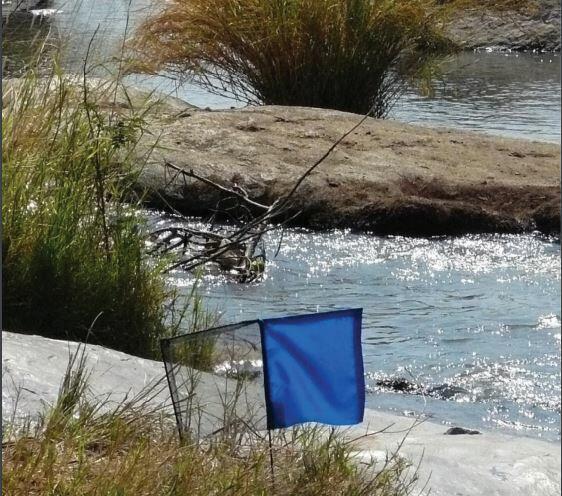
One of LSTM’s projects to control tsetse flies, which spread the potentially fatal Human African trypanosomiasis (HAT), or sleeping sickness, has been featured as a success in a letter from the CEO of the Bill and Melinda Gates Foundation (BMGF), which fund the research.
The letter from Sue Desmond-Hellmann, has been published online and highlights some of the research and interventions funded by the BMGF, including tobacco control, U.S. education and sleeping sickness and asks the question: What if? She talks about HAT as part of the BMGF’s commitment to tackle neglected tropical diseases and describes the progress to reduce the disease as surprising with the number of cases in Uganda dropping from nearly 300 in 2006 to 10 by 2013. The letter highlights innovations in diagnostics and drugs as well as LSTM’s project to control the tsetse vector, called Tiny Targets.
Funded by the BMGF the project involves the use of insecticide treated squares of handkerchief sized blue fabric flanked by black netting being placed at intervals along local riverbanks and water sources. The blue fabric attracts the tsetse flies and they are killed by the insecticide, which reduces the population to such an extent that the number of cases drops dramatically. 70% of cases of HAT in sub-Saharan Africa occur in the Democratic Republic of Congo and the parasites responsible also affect livestock through the same vector causing a disease known in animals as Nagana. This results in severe economic hardship for the families keeping the animals, who are often already living in poverty.
Use of these tiny targets has already led to a reduction in cases where they have been used in Guinea, Uganda and Chad and their size makes them much for affordable to produce, distribute and deploy in the field than the traditional larger and more complicated traps. Current research suggests that they work for around six months and could prove to be an effective tool in moving to elimination of the disease where it is currently endemic.
LSTM’s Professor Mike Lehane, is one of the leaders of the programme, he said: “The project has proved that these tiny targets, which are much less expensive than the traditional traps, are just as effective in killing the tsetse fly vector of this terrible disease. As a consequence we are able to offer protection to a population, as well as their livestock, at a fraction of the normal cost thanks to the investment in our research by the Bill and Melinda Gates Foundation. Our work in the area is continuing and I am delighted that our progress so far has been highlighted as a success in the letter from the CEO of the Foundation.”